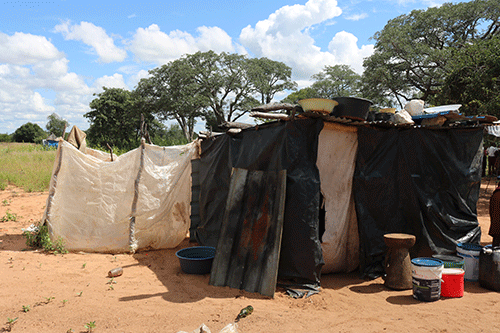Beatus Arnat
NKURENKURU – The majority of the inhabitants in remote areas of Kavango West region continue to live in abject poverty, despite efforts by government to improve the living standards of many households around the country.
Sankasi Ikaso, from the Namibia Statistics Agency during a stakeholder’s engagement in Nkurenkuru recently, said a study by the agency established the situation. He revealed that 79.6% of the total population in Kavango West live in poverty despite government’s provision of social assistance such as old age pension, disability grants, food and cash for work, social grants, health and education grant and foster parent grant. Ikaso said the study focused on health, education and living standards as the three scopes of poverty in the region. He said traditionally, poverty has been measured in terms of income but the focus tends to ignore other poverty challenges which keep the majority of the people, including children, from reaching full potential, such as availability of safe drinking water, education, access to health and nutrition and protection, among others which he adds undermine the national growth and progress towards Vision 2030. In addition, the results showed the main driver of poverty in the region is food insecurity, which contributed 22% of the overall poverty. Other drivers of poverty in the region include child nutrition, cooking and lighting energy, transport assets, sanitation and housing.
According to Ikaso, eight out of 10 people in remote areas live in poverty in the region compared to five out of 10 who live in urban areas.
“There is a need to have policies in place that should aim to target rural areas guided by the indicators in which they are deprived as per the study, so that no one is left behind,” he recommended.
Kavango Regional Council chairperson Joseph Sivaku reiterated the importance of the study and welcomed it.
“Statistics play a very important role in planning for development, it helps with decision making, especially when it comes to allocation of resources and prioritisation of programmes and projects. As policymakers, leaders and public servants, it is important that we are fully briefed on these key poverty statistics and that we understand them so that we are able to make informed decisions for the benefit of our inhabitants,” he said.
An agitated Sivaku cautioned that, despite clear official statistics by the Namibia Statistics Agency, the country is failing to appreciate the findings by using them to assist those regions that are lagging behind in terms of development.
He said there is a need to come up with deliberate and targeted interventions, and prioritising projects, programmes, and allocating bigger portions of budgets to regions that are behind and need assistance. “It is sad and very painful that ministries keep a blind eye on these statistics despite all the efforts and resources put in by the Namibia Statistics Agency to produce the statistics. I hope that the National Planning Commission, as the custodian for planning and development in the country, will call out those sector ministries that are depriving our citizens basic services and hold them accountable and advise them to make use of the available data when allocating resources to regions and assist regions like Kavango West,” Sivaku concluded.
The study also revealed that other regions with high incidences of poverty in remote areas include Omaheke, Zambezi, Ohangwena, Kunene and Kavango East.


